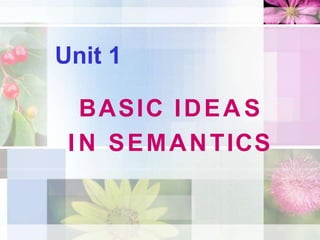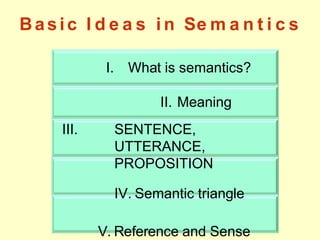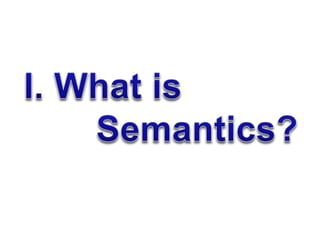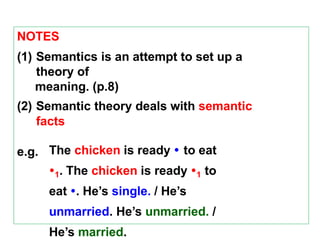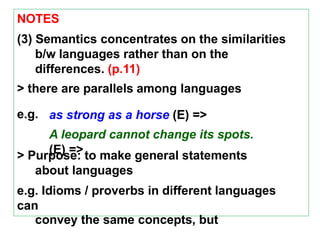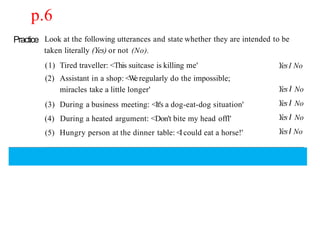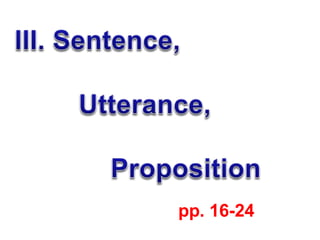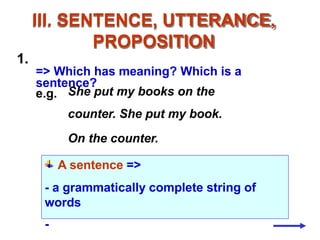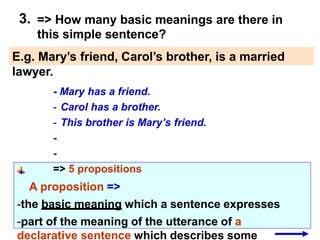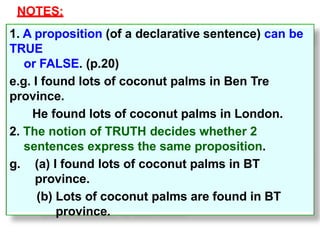This document provides a summary of key concepts in semantics. It defines semantics as the study of meaning in language. There are three main points:
1. Meaning can be studied at the level of sense (the concept or idea associated with a word/expression) or reference (what a word/expression refers to in the real world). There are complex relationships between forms, senses, and referents.
2. A proposition is the basic meaning expressed by a declarative sentence, which can be true or false. Sentences in different languages can express the same proposition.
3. The "semantic triangle" illustrates the relationships between forms, senses, and referents - how a word's form relates to its sense
